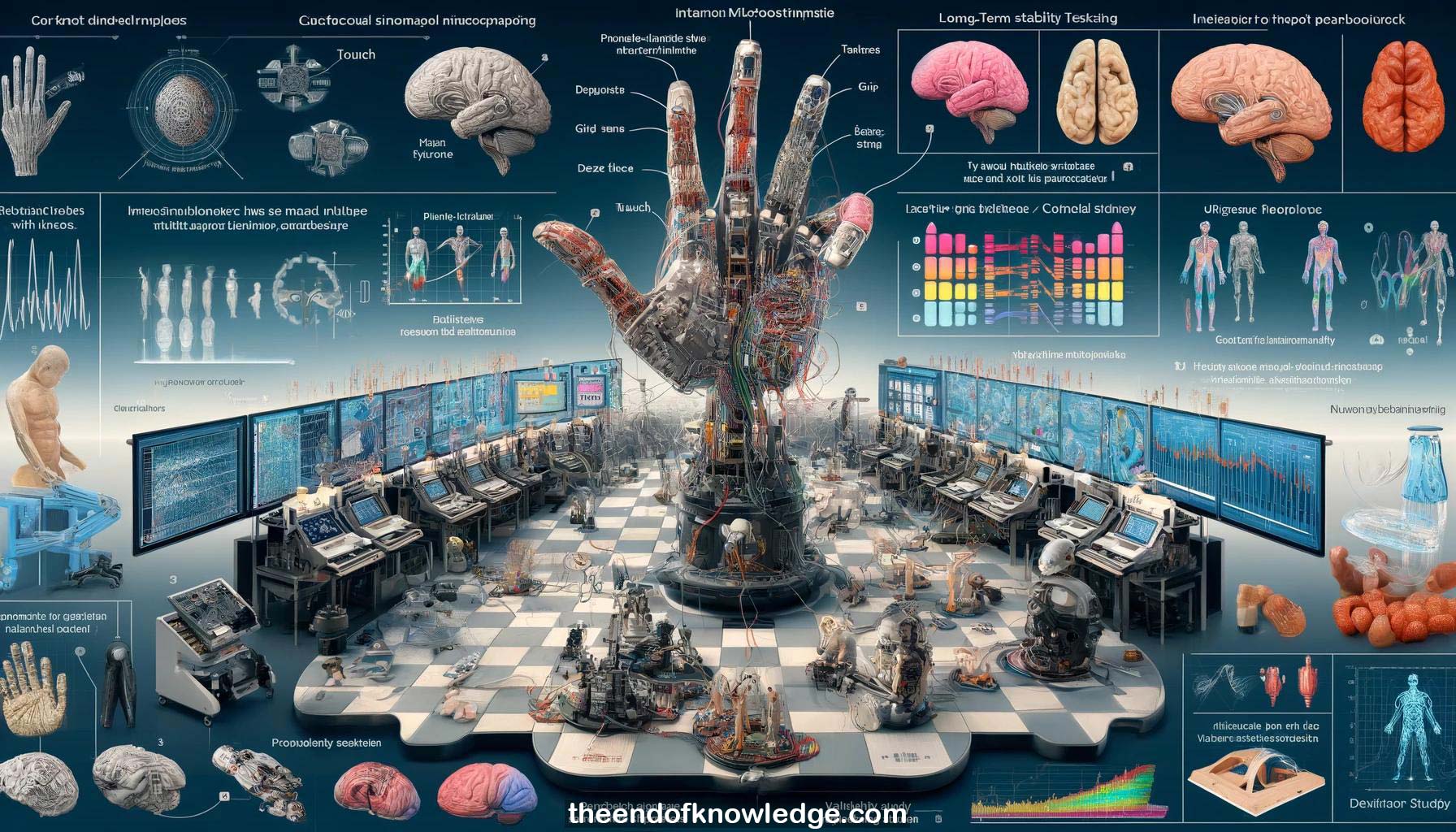 >
>
Concept Graph & Resume using Claude 3 Opus | Chat GPT4 | Llama 3:
Resume:
1.- Tactile feedback is critical for dexterous use of bionic limbs, as vision alone is insufficient.
2.- Skin has high innervation density, especially in the fingers, allowing discrimination of fine spatial details.
3.- Force modulation when grasping objects requires tactile feedback. Vision alone leads to errors in applied force.
4.- Tactile feedback enables perceiving object properties like texture, softness/hardness through dynamic interaction with the object.
5.- Somatotopic mapping of touch is preserved throughout the nervous system from periphery to cortex.
6.- In amputees, cortical somatotopic hand representation persists, though some conflicting literature suggests remapping.
7.- Intracortical microstimulation (ICMS) of somatosensory cortex produces sensations referred to the hand (projected fields).
8.- Projected fields are stable over years in human participants, as measured by repeated mapping.
9.- Variability in mapping projected fields is similar within and across days, and is partly attributable to the mapping method.
10.- Projected fields align with receptive fields measured from residual sensation in some participants, supporting stability of cortical somatotopy.
11.- Individual ICMS electrodes yield poor localization of sensations in a rapid temporal order judgment task.
12.- Simultaneous stimulation through multiple electrodes with overlapping projected fields produces sensations localized to a single finger.
13.- A simple linear model can predict the projected field resulting from simultaneous stimulation of multiple electrodes.
14.- Multi-electrode stimulation dramatically improves participant accuracy in rapidly judging which finger was stimulated.
15.- ICMS pulse amplitude modulates perceived intensity of the tactile sensation.
16.- Perceived intensity from ICMS can be equated to indentation force applied to the finger.
17.- Amplitude discrimination thresholds for ICMS suggest 3-8 discriminable intensity levels per electrode.
18.- Multi-electrode stimulation increases the range of deliverable intensities to approximate ecologically relevant forces.
19.- Biomimetic patterning of ICMS trains to resemble neural responses to touch improves discriminability over linear amplitude modulation.
20.- Multi-electrode ICMS with biomimetic patterns enables discrimination of foam compliance, demonstrating the importance of patterning.
21.- Simultaneous activation of multiple electrodes with non-overlapping projected fields can produce percepts of oriented edges.
22.- Simultaneous multi-electrode stimulation is insufficient to reliably convey complex spatial patterns like letters.
23.- Sequential stimulation of multiple electrodes with short inter-pulse intervals produces a percept of motion across the skin.
24.- Temporal interval between sequentially activated electrodes governs perceived speed of motion across the skin.
25.- Rapidly sequential multi-electrode ICMS dramatically improves the ability to convey complex spatial patterns compared to simultaneous activation.
26.- ICMS of somatosensory cortex is safe and does not produce painful sensations. Parameters are chosen carefully to avoid damage.
27.- Attention can modulate detectability of near-threshold ICMS but has little effect on sensations at supra-threshold intensities.
28.- ICMS can sometimes produce "ghost" sensations, though these are difficult to distinguish from endogenous phantom sensations.
29.- Localizing the "hotspot" for ICMS is straightforward with a few electrodes but becomes time-consuming with large electrode counts.
30.- Efficacy of ICMS may be improved by targeting multiple cortical layers and expanding spatial coverage through high-density 3D arrays.
Knowledge Vault built byDavid Vivancos 2024